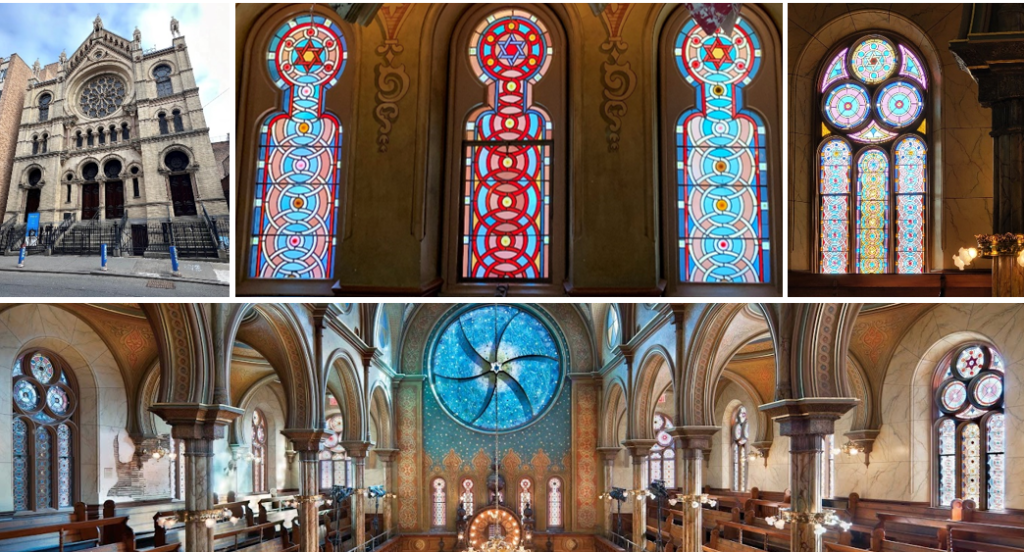
Shelach Lecha (שלח לך – send for yourself), Book of Numbers, chapters 13 to 15. Moses sends twelve spies to explore the Promised Land. Upon their return, except for Caleb and Joshua, the spies declare that conquering the land is impossible, causing doubt and lamentation among the people. God condemns that generation to die in the desert. Following this, God prescribes the laws of agricultural offerings and emphasizes the observance of the Sabbath. Lastly, God commands the wearing of tzitzit as a reminder of the commandments and to stay faithful to them.
The Eldridge Street Synagogue was founded in 1887 by Jewish immigrants who came to explore this new land. The architect Peter Harrison designed the building, which features a blend of Gothic and Moorish styles. The colorful stained glass windows, primarily in shades of blue, echo the threads of the tzitzit. After restoration, the synagogue reopened in 2007 as a museum and active place of worship, preserving the history of the Jewish community in New York.
